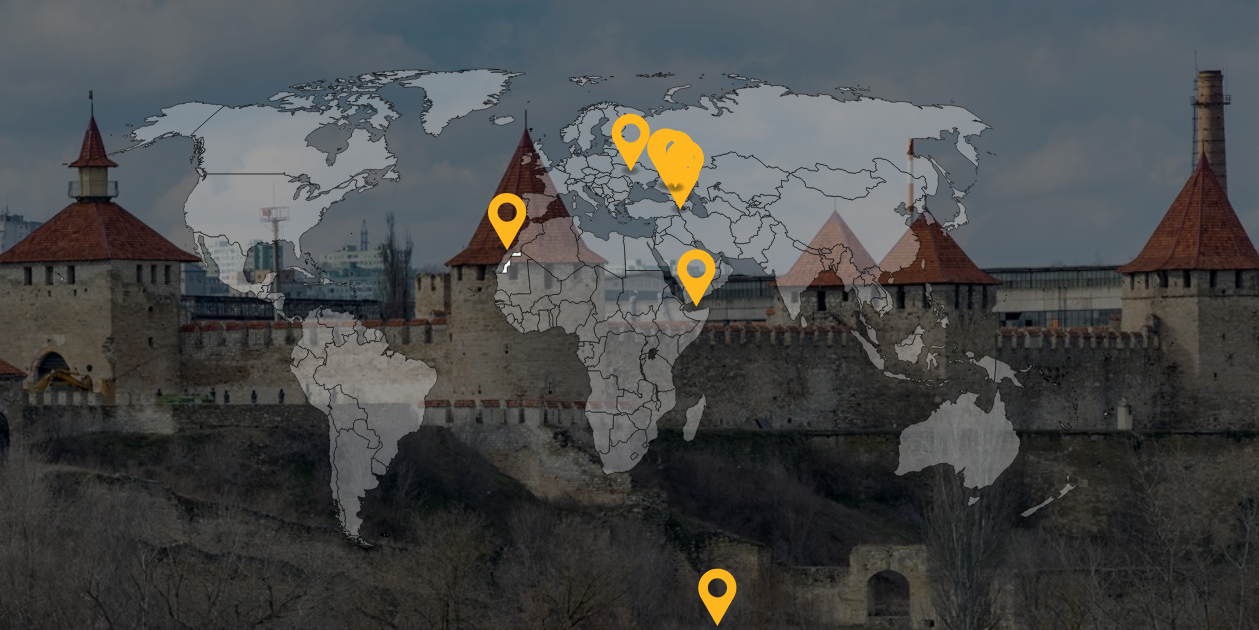Why You Should Care? Because it’s time for cities to take back their rightful place as the most fundamental building block of human society.
OZY has spent the last nine months reporting from every country on earth for our Around the World project, and we’ve noticed something surprising: “Countries” don’t really mean as much as they once did. Everything from the digital economy to international crime makes our system of national borders feel dated, and the innovative new trends and pioneering rising stars shaping the future start more local than ever before and go global faster. Take Beijing’s emergence as the A.I. capital of the world, for example, or the software disrupting public transport in Kigali and the rest of Africa; there’s also Beirut’s vegan food scene and Dar es Salaam’s urban hip-hop.
More than half of us worldwide already live in cities, and by 2050 there will be 20 new megacities of more than 10 million people each, according to the Global Cities Institute, including South Asia’s Chittagong and West Africa’s Abidjan. No, I won’t tell you which nations these megacities happen to be situated in — that’s the point.
Cities are “the most fundamental structure of social organization,” says author and globalization analyst Parag Khanna, noting that “empires come and go, nations crumble all the time, [but] the city’s always there.” Khanna describes countries like Togo and Benin in West Africa as simply “suburbs of the [Nigerian] city of Lagos” and Bulgaria as a “suburb of Istanbul.” The economic, social and cultural connections we have to megacity human hubs are often far more impactful on our lives than the color of the flag raised above our respective parliaments.
COUNTRIES ARE A VESTIGE OF THE 20TH CENTURY AND IT’S TIME TO MOVE ON
So let’s dispense with the pretense that looking at the world through the lens of countries tells us anything at all about people’s lives. Instead, let’s develop a new world order with cities at its heart. No, not necessarily a return to the city-states of the medieval world — though many have argued that places like Hong Kong, Singapore and Dubai have kind of nailed that model. Instead, let’s build a system where nations still retain some sway — perhaps over redistributive taxation, the military and the hearts of the nostalgic — and let cities do everything else. I’d like to see a future where a city can negotiate a free trade deal with another and have its own immigration policy. Unions of cities within or between countries could align their legal systems and collectively regulate the private sector. Let’s replace the United Nations with a United Cities, the European Union with the Union of European Cities, and let elected mayors appoint ambassadors to other urban areas.
It’s not dissimilar from what urban expert and co-author of The New Localism, Bruce Katz, describes as a “consortia” of cities that will increasingly work together as problem-solving institutions. Meanwhile, Tom Bell, a law professor at Chapman University and author of Your Next Government, envisages “one possible future” in which “various quasi-sovereign territories” like special economic zones are interconnected, perhaps sharing some “open-source legal operating system” — like a Linux of common law.
The move away from countries toward more dynamic, local political entities isn’t just some anarcho-futurist spasm — cities as hubs of innovation are often held back by nation states that are often politically dysfunctional or have conflicting interests. “There’s never been a city that didn’t want more connectivity between cities,” says Khanna. Some of this urban political backlash is already being seen — whether it’s London’s mayor insisting his city is “open” despite the uncertain outcome of Brexit negotiations or sanctuary cities in the United States that are essentially enforcing their own immigration policy.
Plus, how we categorize the world really matters. When it comes to development policy, we should be comparing entities like Manila and Mumbai, not some amorphous nation-state spaces with borders drawn by Europeans in a previous century. Why do we assume that life in Moscow is more similar to life in Siberia than to life in London whenever we talk about “Russia” as a contiguous unit? Countries are a vestige of the 20th century, and it’s time to move on.
From Western Sahara, a territory claimed by the Sahrawi Arab Democratic Republic, to Somaliland, many regions of the earth are not decidedly part of a country.
Admittedly, it does look rather neat and tidy when you can perfectly color in a world map with a handful of pastels — and in moving toward loose constellations of cities we would forfeit such a patchwork. But our existing map isn’t as perfect as you’d think. From Western Sahara, a territory claimed by the Sahrawi Arab Democratic Republic, to Somaliland, many regions of the earth are not decidedly part of a country. Places like Kosovo, Palestine and Taiwan have limited recognition, while Transnistria and Artsakh have virtually none. Then there are territories controlled by rebel groups that have claimed independence, such as Donetsk and Luhansk in eastern Ukraine, or terror outfits like the Islamic State. Not to mention places that were totally ignored after voting for independence, like Iraqi Kurdistan, Catalonia and the Italian region of Veneto. On top of all that, there are dozens of unresolved border disputes between U.N. members, as well as fully agreed upon nations that barely function as states, from Syria to the Democratic Republic of the Congo.
Most of these independence movements are driven by nationalism, as the right to self-determination has been interpreted as the right to draw lines in the sand around yourself. Of course, battling the reflex of nationalism will be a major hurdle to my new world order. But what if nationalism was a symptom, not a cause, of our current international woes? Arguably the fact that political borders of nation-states usually align with economic, social and cultural borders (and often linguistic and ethnic borders too) could contribute to the rise of racism and xenophobia. A more flexible system where urban communities are highly connected with each other could remove some of this baggage.
Of course, there are a few logistical issues to figure out about how cities like London and New York could enter into a free trade deal on their own, short of erecting city walls. But it’s not totally unprecedented: Special economic zones within countries already sometimes enable favorable trade and immigration procedures, while Scotland — a country but not a nation-state — has recently suggested that it could have its own immigration policy without requiring full independence to do so. Ironically, “the more borders you have, the more borderless you will become,” says Khanna, because smaller states are inherently more reliant on connectivity and trade for economic survival.
So if you want a global community of free trade and migration, maybe the answer is not fewer borders, but more.
By








































